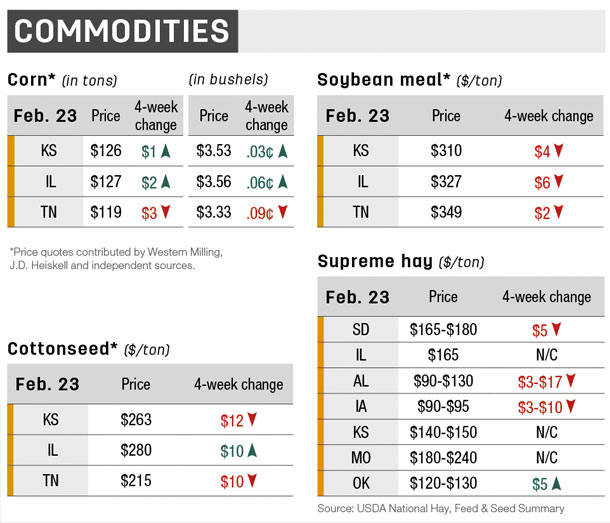For those with any remaining 2016 hay stored outside or other remaining supplement, it may be helpful to feed it now and allow some pastures to re-establish.
Allowing grass to grow and not allowing cattle to graze forage below recommended thresholds is vital to long-term recovery. If early spring has arrived, like many forecasted, it could mean early weeds galore and flies to boot.

Mineral with insect growth regulator (IGR) is not a silver bullet by any means, but it won’t hurt if the price is reasonable. Rotate in a different IGR chemical class every other year to minimize resistance.
It would certainly help if neighboring cattle operations also used IGR products. Fly control requires multiple approaches. Fly tags and rubs may be a necessity in addition to feed-through or bolus IGRs.
Make sure cattle rubs are low enough for calves. Study the best time to insert fly tags. Applying tags prematurely will limit their long-term effectiveness. And remember to remove tags according to label recommendations.
Spring calving
For calves to begin hitting the ground around Jan. 10, bulls need to go into pastures on April 1. Have your calendar marked to remove bulls from heifers after a 45- to 60-day breeding season. Spot check and monitor breeding activity.
Writing down natural matings by date and eartag will help confirm if conceptions are occurring as normal or help you understand more quickly if problems exist. Cattle on spring pastures that are sparse or are not establishing will need additional energy and protein. In general, the herd’s average body condition score should be improving during the breeding season.
Fall calving
Preg check, preg check, preg check. You may not need to know how far along each cow is bred; just confirm that each cow remaining in the herd is pregnant and able to pay her living expenses. Cull the rest. Those wanting higher calf prices should search for marketing outlets that conduct preconditioned or source and age sales.
Many of these marketing opportunities have a tagging, vaccination and weaning protocol. Administering pre-weaning vaccinations and training weaned calves to troughs and bunks is oftentimes easier than you think. ![]()

-
Jason Duggin
- Beef Extension Specialist
- University of Georgia
- Email Jason Duggin







